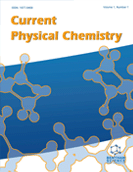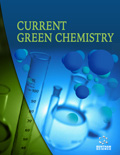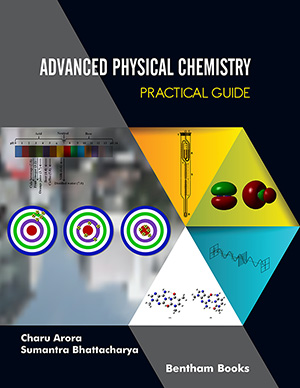Abstract
Over the past 10-15 years LNA (Locked Nucleic Acid) has taken a central position in nucleic acid chemistry and biology. The enhanced hybridization properties against both DNA and RNA have become a new reference in the field and proven to be enabling for many application in life sciences. For therapeutic use as RNA targeting drugs LNA enable the design of potent antisense oligonucleotides. Much effort has been dedicated to get efficient delivery of RNA targeting drugs, but in contrast to e.g. siRNA duplexes it has been demonstrated that LNA oligonucleotides are taken up by cells without added deliver vehicles in an active state (gymnotic delivery). Here, the fundamental properties of LNA are reviewed together with the recent and most advanced pre-clinical/clinical LNA data.
Keywords: LNA (Locked Nucleic Acid), Antisense, hybridization, Bicyclic, Nucleoside structure, Property space, Gymnosis, Drug discovery, Pharmacokinetics, Pharmacodynamics, Non-human primate, Pre-clinical, ApoB, PCSK9, HCV, Clinical
Current Physical Chemistry
Title:LNA Antisense: A Review
Volume: 3 Issue: 1
Author(s): Troels Koch
Affiliation:
Keywords: LNA (Locked Nucleic Acid), Antisense, hybridization, Bicyclic, Nucleoside structure, Property space, Gymnosis, Drug discovery, Pharmacokinetics, Pharmacodynamics, Non-human primate, Pre-clinical, ApoB, PCSK9, HCV, Clinical
Abstract: Over the past 10-15 years LNA (Locked Nucleic Acid) has taken a central position in nucleic acid chemistry and biology. The enhanced hybridization properties against both DNA and RNA have become a new reference in the field and proven to be enabling for many application in life sciences. For therapeutic use as RNA targeting drugs LNA enable the design of potent antisense oligonucleotides. Much effort has been dedicated to get efficient delivery of RNA targeting drugs, but in contrast to e.g. siRNA duplexes it has been demonstrated that LNA oligonucleotides are taken up by cells without added deliver vehicles in an active state (gymnotic delivery). Here, the fundamental properties of LNA are reviewed together with the recent and most advanced pre-clinical/clinical LNA data.
Export Options
About this article
Cite this article as:
Koch Troels, LNA Antisense: A Review, Current Physical Chemistry 2013; 3 (1) . https://dx.doi.org/10.2174/1877946811303010009
| DOI https://dx.doi.org/10.2174/1877946811303010009 |
Print ISSN 1877-9468 |
| Publisher Name Bentham Science Publisher |
Online ISSN 1877-9476 |
 37
37
- Author Guidelines
- Bentham Author Support Services (BASS)
- Graphical Abstracts
- Fabricating and Stating False Information
- Research Misconduct
- Post Publication Discussions and Corrections
- Publishing Ethics and Rectitude
- Increase Visibility of Your Article
- Archiving Policies
- Peer Review Workflow
- Order Your Article Before Print
- Promote Your Article
- Manuscript Transfer Facility
- Editorial Policies
- Allegations from Whistleblowers
Related Articles
-
Targeting Lentiviral Vectors for Cancer Immunotherapy
Current Cancer Therapy Reviews Hijacking the Hedgehog Pathway in Cancer Therapy
Anti-Cancer Agents in Medicinal Chemistry Indolinones as Promising Scaffold as Kinase Inhibitors: A Review
Mini-Reviews in Medicinal Chemistry Mesenchymal Stromal Cells in Rheumatoid Arthritis: Biological Properties and Clinical Applications
Current Stem Cell Research & Therapy The Tumor Suppressor Gene ARF as a Sensor of Oxidative Stress
Current Molecular Medicine Quinone-Based Drugs: An Important Class of Molecules in Medicinal Chemistry
Medicinal Chemistry Cellular Targets and Mechanisms in the Cytotoxic Action of Non-biodegradable Engineered Nanoparticles
Current Drug Metabolism A Multi-target Drug Designing for BTK, MMP9, Proteasome and TAK1 for the Clinical Treatment of Mantle Cell Lymphoma
Current Topics in Medicinal Chemistry Cyclodepsipeptides - Potential Drugs and Lead Compounds in the Drug Development Process
Current Medicinal Chemistry Nanotechnology and Radiopharmaceuticals: Diagnostic and Therapeutic Approaches
Current Drug Delivery Inhibition of Intercellular Communication between Prostate Cancer Cells by A Specific Anti-STEAP-1 Single Chain Antibody
Anti-Cancer Agents in Medicinal Chemistry CXCR4 Inhibitors: Tumor Vasculature and Therapeutic Challenges
Recent Patents on Anti-Cancer Drug Discovery New Medical Strategies for Midgut Carcinoids
Anti-Cancer Agents in Medicinal Chemistry Small Molecules ATP-Competitive Inhibitors of FLT3: A Chemical Overview
Current Medicinal Chemistry Recent Studies on Macromolecular Synthesis Labeled with 3H-Thymidine in Various Organs as Revealed by Electron Microscopic Radioautography
Current Radiopharmaceuticals Focal Adhesion Kinase as a Therapeutic Target of Bortezomib
Anti-Cancer Agents in Medicinal Chemistry Dynamics of Virus-Host Interplay in HIV-1 Replication
Current HIV Research Gene Expression Abnormalities in Thymoma
Current Pharmacogenomics HGF and RhoGTPases in Cancer Cell Motility
Current Signal Transduction Therapy Genomic Instability and Cancer
Current Molecular Medicine














